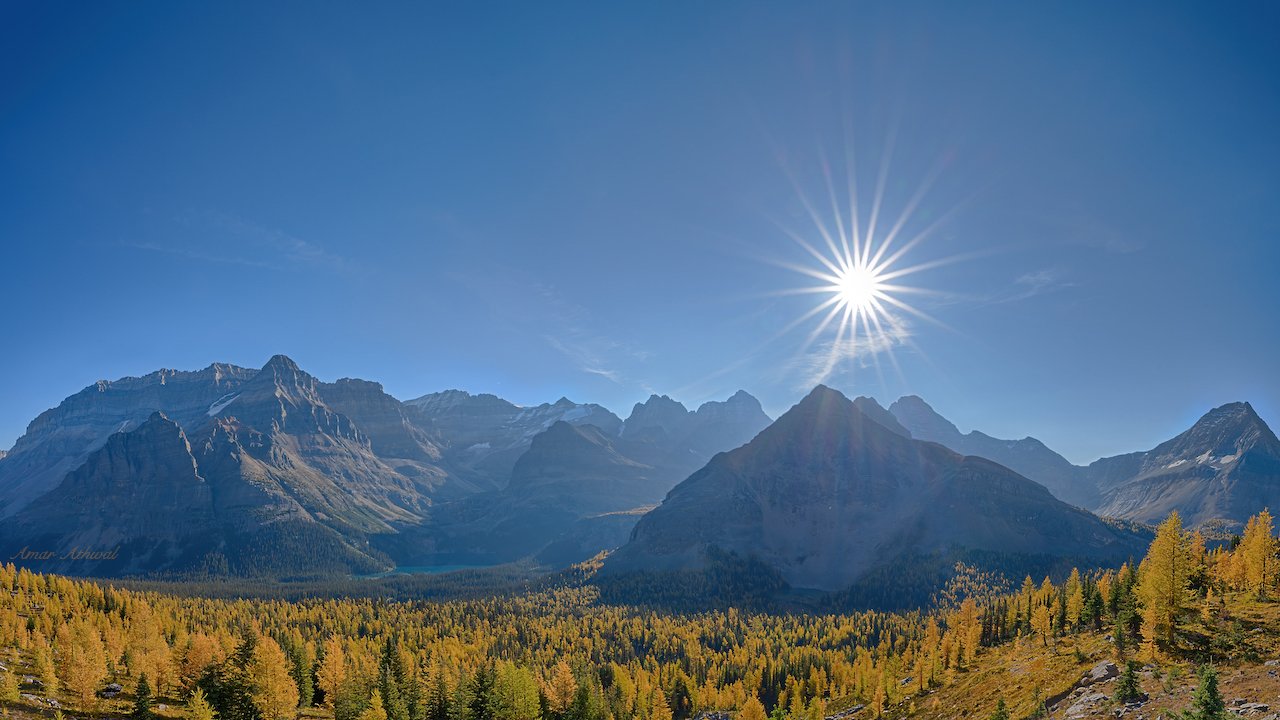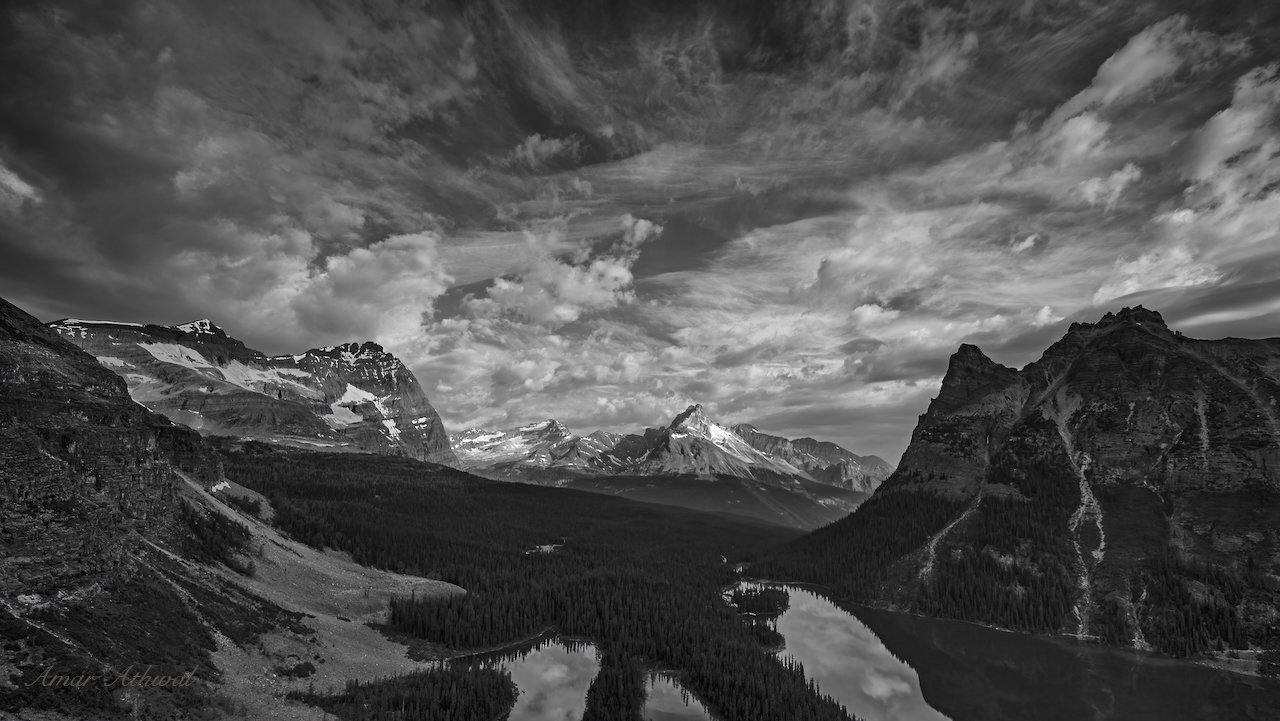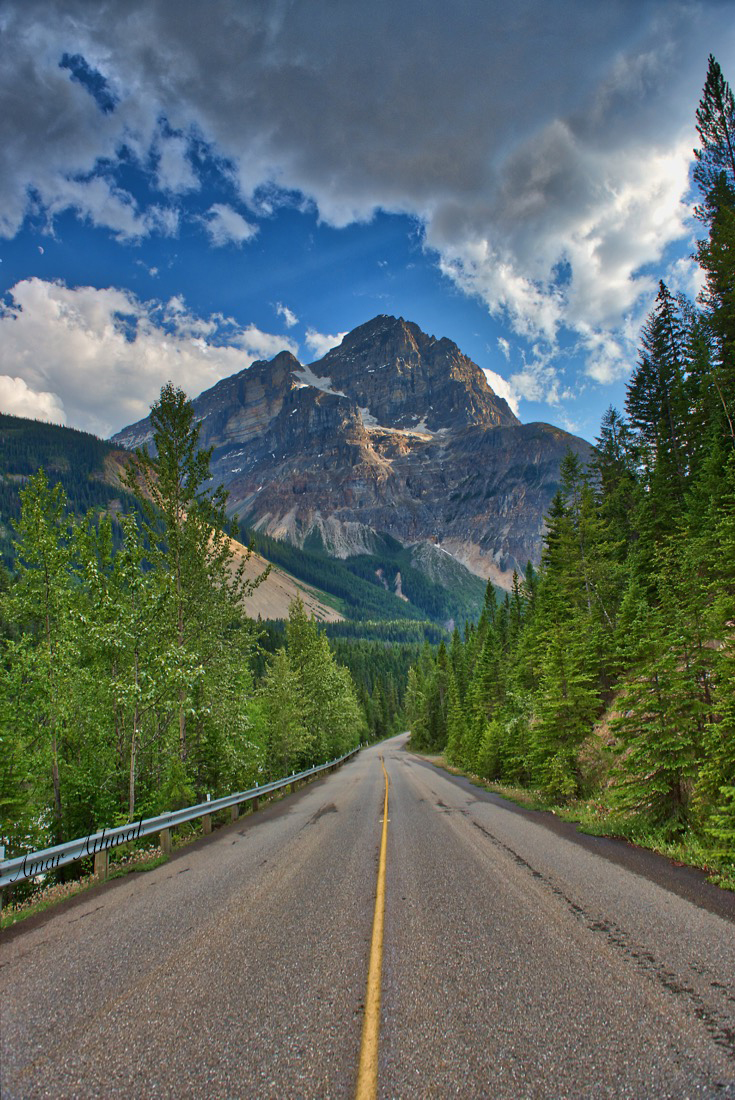Yoho Valley in Yoho National Park is a very cool place to go. A few years ago, I was able to cover all the trails, enjoying all the falls I came across or could see from or near the tails. Takakkaw Falls is the most popular one by far. Helped with the falls being a short walk from the parking lot. The falls have a total height of 373 meters, making it the second tallest waterfall in Canada. “Takakkaw” means “magnificent” in Cree. No matter, if you are looking at it up close with the water spray hitting your face or across the valley from the Iceline Trail, it is magnificent. Unless I’m in the parking lot early in the morning, I tend to watch it from a distance. Zooming in and out with the camera to get the picture. The falls are fed by the Waputik Icefield throughout the summer, but if you want to see them in their peak conditions. You must visit the area in late spring when there is heavy snow melt.
Mealy Primrose
With the lack of snow over the winter and the early start of the warm weather, everything seems to be two to three weeks early. A few weeks ago, I was looking at glacier lilies starting to bloom and other flowers as well. I was having a quiet walk around the lake, looking at the wildflowers and birding in the background. After having a quick chat with a friend/colleague who was training new team members, I had the trail to myself. Until my walk back to the parking lot. Time goes by fast when photography opportunities go up during the spring. When I saw this very small mealy primrose with dew growing next to the inlet water to the alpine lake. I spent five to ten minutes trying to get the right image, with only the flower in focus and those nice light circles formed in the background. The circles get formed when spots of reflective light on the water become out of focus. As is always the case, when I have the space and the time, I can take the time to show all the beauty of the flower in an image.
Golden Sunrise
Alpine larch, also called subalpine larch and lyall larch is a deciduous conifer species that grows higher on cool exposures than other trees. It grows in very cold, snowy, and windy environments. It remains small and stunted, but in wind-sheltered areas it can reach up to 29 m in height. For more than half of the season, the average temperatures are below freezing for this tree’s environment. The average precipitation for most of the alpine larch sites is between 800 and 1900 mm. Generally, the snowpack starts around these larch trees in late October and can linger with most stands until early July.
Most of the soil development in the alpine larch stands tends to be immature. Alpine larch sites have undergone alpine glaciation during the Pleistocene and have been deglaciated for less than 12,000 years. Due to a short, cool summer season as well as low soil temperatures and high acidity, the processes that can enrich the soil are limited. Alpine larch commonly grows on slopes covered with granite or quartzite talus, which were not previously surrounded by vascular plants. Vascular plant tissues are great at conducting water and minerals. Even in sites that have better developed soils, the soils are still rocky and immature.
The Alpine larch is a slow-growing, long-lived tree. In ideal sites, the dominant trees can have a 400 to 500-year life span. Many can live to 700 years of age, oldest are estimated to be about 1,000 years. In 2012, the oldest one was recorded in Kananaskis, Alberta, at 1,917 years old. A sapling that is about 1.2m tall is about 30 to 35 years of age. With alpine larch roots extending deep into the rocky ground, they are well anchored and able to deal with very heavy winds. The crown and trunk of old trees may break under heavy winds, but they are less likely to be uprooted. For many species of trees, snow avalanches and snow slides are a source of damage to them. But the alpine larch is better adapted to surviving these conditions than other tree species. An alpine tree 6 m high can handle the flattening by snow slides, then stand straight when the snow melts.
Its ability to take hold of steep northern slopes and snow chutes, where other trees have problems doing the same. It’s assumed alpine larch helps to stabilise snow loads and reduce the force of avalanches. Scientists from several countries that are interested in avalanche control are looking at alpine larch as a possible solution. Most of the wildlife makes use of alpine larch stands during the summer, when cooler timberline temperatures and succulent vegetation await them. The Alpine larch is more than just a pretty looking tree.
Cathedral Mountain
It was another early morning start for my second visit to the Lake O’Hara area this hiking season. When I left home, the sky was clear, but overcast near the divide. No matter, the hike was happening as planned. After 5 km in, it was a good time for water to spread a spray shield around my face from the waking mosquitoes. Another km in, I looked toward the clouds to see some of them lit up with warm colours. But, I kept pushing as there was no good place to take a picture.
The closer I got to the lake, the faster I got. Some sort of mental gravitational force was at work. I looked up, the sky was slowly opening up and light was hitting the peaks to the west of me. That got me moving even faster. Without stopping for a break, I swung around the lake and accelerated to the Opabin Plateau. I did not know how much time I had with the light. The pack went down and I pulled out the camera right away. Once I got the pictures, it was time for a break. I pulled out the food, sat back and enjoyed the views provided by the morning hike.
Odaray Mountain
The first time I walked the road to the Lake O’Hara area, I was checking along the way for any photographic opportunities. It keeps the mind busy on the eleven kilometers stroll. One of the views I wanted to take a picture of, right from the first time I saw it, was that of the Odaray Mountain. Just a few days before I had walked the same path, but it was too dark for a good picture. The clouds covering the sky completely, took away the opportunity I was looking for in the Lake O’Hara area. When I was back at the parking lot, the sky cleared up. So I was out for my second attempt. It was all looking good as I was walking to Lake O’Hara. Odaray Mtn looked great with fresh snow, soI had to stop and get a few pictures of this classic Canadian Rockies look.
It’s a good thing I did, because as I got to the lake, the clouds covered the sky once again. I spent some time at the lake, with everything closing the day before. I had the lake to myself, except for a few Canada Jays, who tried to steal my food while I was eating. I had an almond, cashew and a piece of a walnut in my hand, they were heading for my mouth. One of the jays hit my hand, the almond hit the ground and the other two items went to the back of my throat. The jay tried to pick up the almond with its beak. I stepped toward it, it flew off and I got the almond piece back. My perfect record continues to not feed the wildlife.
Round-leaved Orchid
A day after doing a hike that took some effort, it was a good day to take it easy. Ended up covering the same amount of distance, but little to no elevation gain. A relaxed walk on the trails that don’t see too many hikers, only stopping to take pictures of wildflowers. I have taken so many pictures of flowers, I can usually tell before I come next to it if it’s worth stopping for. The location of the flower is important as well what is around it. With the wildflowers, there’s often other things growing around it that can make the image too busy for my liking. For this round-leaved orchid. I had come back to the start of the trail and crossed the bridge to walk on the other side of the river. Trying to find a possible location to get a clear picture of a small waterfall I saw down the river from near the trail. I was passing various wildflowers and making a mental note where to stop on my way back. No luck with the waterfall, but on my way back, I was excited about the location of the orchids, lots to choose from. I tend to use my wildlife lens for most of the flower pictures as well. I was about two meters from this flower, it was surrounded by other orchids. With a shallow depth of field (the area in focus), I was able to create a soft background. Which helped the orchid pop in the picture. And the several circles you see in the image that add to the image, are formed when bright spots are not close enough to be visible and not far enough to blend in with the background. With the right lens they become circles when the light passes through the lens to the camera’s sensor. So for this flower picture, it was the location, what was around it and how the light was hitting the surrounding as it came through the trees. Oh yeah, if you have not guessed it already, I wanted to place some of the orchids in the background to create the a white/pink background. Always keep the mind working. Take all those factors and combine them to make the image look simple to the viewer’s eyes.
Meeting of the Two Rivers
Every year I need to drive up Yoho Valley, to enjoy the great drive, to see the Takakkaw Falls and even more falls when hiking in this area. Beginning of the season, I’ll pop down to the confluence of Yoho and Kicking Horse Rivers. Spending an hour or two to enjoy watching the water and to see if I can get a few good pictures. The sound of the water passing through the area dominates all other sounds, except on occasion I might hear a train going by.
It was the middle of the day when I was there last. With the overcast sky, the conditions were perfect for long exposures. You tend to lose more details when directly the light the water. Much of the green water was thanks to the Yoho River, bringing in the rock flour from the glaciers, reflecting the beautiful colour. Yoho River coming in from the left. Kicking Horse River is straight ahead in the picture, starting as an outlet at the nearby Wapta Lake. A few days after I had taken the pictures, the melt water had kicked in, all the rocks in front of me were under the water. I got there just in time to safely enjoy and get the pictures I wanted.
Mount Schaffer
Few weeks back I did my last hike into Lake O’Hara area to enjoy the beautiful landscapes.
Lake O'Hara
The day started out with low clouds covering the sky, but it started opening up as i was walking along the Yukness Ledges above Lake O’Hara.
Takakkaw Falls
Got to enjoy the Takakkaw Falls as the rain stopped for a short while and the low clouds moved through the Yoho Valley in Yoho National Park.
Ottertail Range
Anyone who hikes in the mountains is fully aware of switchbacks and to get to Burgess Pass in Yoho NP, 52 switchbacks needed to be covered over 7.5km. That was the route from near the Trans-Canada Highway. There was an easier way to get there, but not as fun. The goal was to get to the pass and then hop over to Yoho Pass. The weather for that morning was the clouds would be moving out and the blue sky moving in. But, the weather forecast in the mountains does not always goes as planned. The rain kept company most of the hike to the pass, with a few small breaks. It was light rain, so the waterproof jacket stayed in the pack. Only breaks along the way to the pass was to take pictures when the light would peak through. One such moment was the view of the Ottertail Range, partially covered with clouds and lit up by the morning light. In the valley below the freight train was heading east, leaving Fields B.C. Its views like this why hiking is a great.
Mount Stephen
So many views to enjoy as I travel through the mountain on the road. Stopping every now and then to take the picture to remember the day. This was the case when I was visiting Yoho NP.
Yoho River
It was too cloudy for sunset picture, so I decided to just focus on the river, taking long exposures.
Takakkaw Falls
I was visiting Yoho Valley in Yoho NP, a beautiful place anytime of the year. I was exploring the valley early in the morning, rain had just stopped and the low clouds were still lingering . No visit to the valley would be complete without a visit to see the Takakkaw Falls.
Until next moment,
Amar
Porcupine
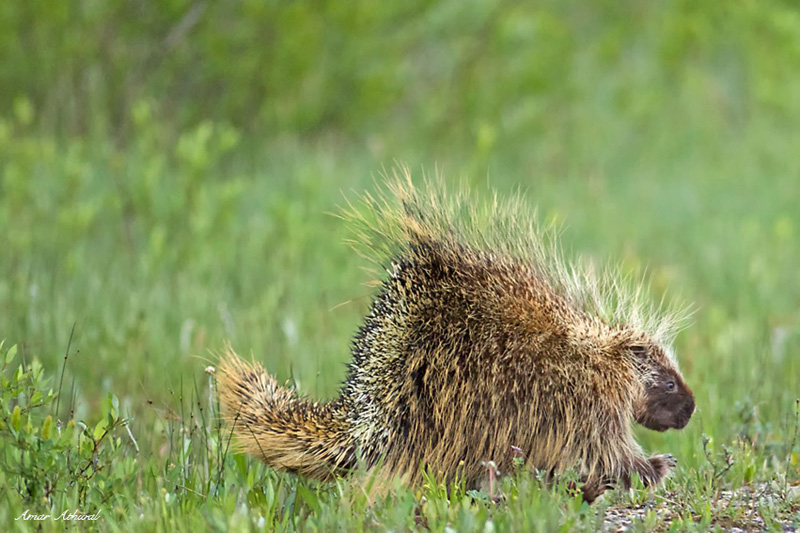
Came across this porcupine early in the morning, when it saw me it started to move away. Not a runner by any means, the quillis on its back play the major role in its defense. So unless it is near shrubs, you will get a pretty good look and or few pictures before it is out of sight.
Until next moment,
Amar
Mountain Goat

Mountain Goat
 This female Mountain Goat was spotted a week ago, licking minerals near the bottom of the valley. Few weeks from now they will start losing their winter coat, so its was good to get pictures of them before that takes place.
This female Mountain Goat was spotted a week ago, licking minerals near the bottom of the valley. Few weeks from now they will start losing their winter coat, so its was good to get pictures of them before that takes place.
Until next moment,
Amar
Mount Stephen

Before Yoho Valley opened to the vehicles this year, I visited the area few times. Taking pictures and enjoying the beautiful views. One of the beautiful view is that of Mount Stephen. Few years had passed since I last took pictures of it. So when I arrived there one morning with the sky full of clouds, I thought I was going to have to wait a bit longer. But while checking out the Yoho River, clouds opened up to let the light through, giving me another picture of the beautiful mountain.
Hoary Marmots

Was out and about on Yoho NP one morning, when I spotted these hoary marmots . They all gathered on top of this rock for few minutes before spreading out in the general area. They hibernate most of the year and when they are up, its a pretty relaxed lifestyle they lead.
Until next moment,
Amar
Takakkaw Falls
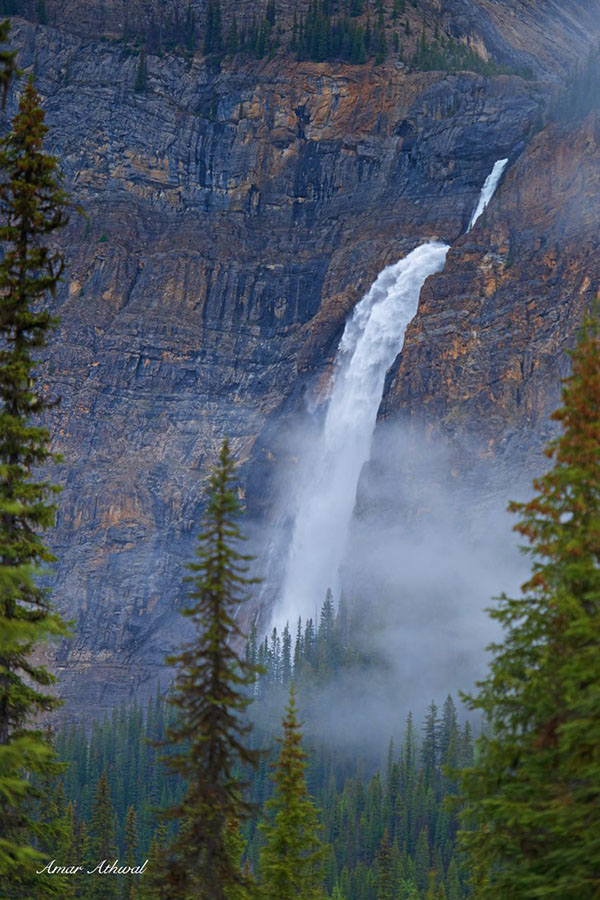
I was in Yoho National Park, heading for Takakkaw Falls. The low clouds made the visit that much more interesting. Before I reached the fall, I saw the view of it from the road, with the low clouds and the trees in the foreground. I decided to take the pictures of the fall right there.
Until next moment,
Amar


